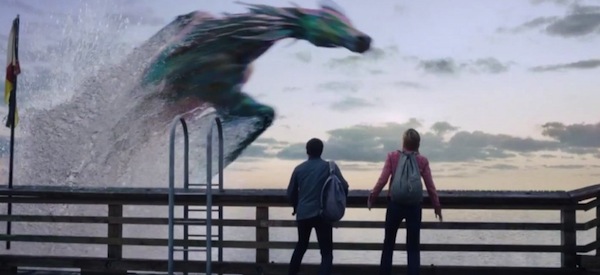VFX From Inception to the Big Screen—Part 1: Pre-Production and Production

Ever wonder what the process is to get fantastic effects onto the screen? Creating VFX is generally pretty complex, but here’s a distilled look at the basics, broken down by the production team of Scarecrow VFX: VFX supervisor Josh Bryer and VFX producer Melissa Brockman.
It all starts in pre-production. When you’re developing and writing, you’re creating the concept of an effect, and you’re maintaining focus on how that effect drives the story. After your project is a go and you get into pre-production, you need to start focusing on the effect and how it’s going to work visually. Here are some of the tools you have to ensure that your effect is going to tell your visual story:
Storyboard
This should be your first go-to for any VFX-heavy sequence. What’s your action for the sequence and how do your effects fit with that? This is where you can make sure that the basics of your vision for the effects is going to work with the action. Focus on the broadest scope and details, and start to get your shots and shot count dialed in. Is the scale of that black hole that you want to devour the planet with, going to work with the composition that best tells the story?
Discussions with VFX team
The foundation for the effects that you’re designing in pre-production will have a direct impact on your cost, both during principal and in post. Collaborate with your VFX team as you’re designing the effects. Discuss the options—sometimes seemingly small changes in design can lead to significant differences in cost. Figure out how you’re going to photograph the shots during principal in a way that creates the right intersection of cost and look for both your physical production and post.
Concept Art
The creation of Concept Art still frames is generally a good process to begin during pre-production, as it provides a more concrete vision of the effects. As a filmmaker, you want to make sure that your entire team is visualizing the same thing when you’re discussing production implementation.
During pre-production, concept work is sometimes done by the production designer/art director and other times by the VFX team. This can range from painterly and stylized to fully fleshed-out, photo-real style guides. The process may continue through production and into post as you hone in on more specific looks. As a filmmaker, you want to be working with a team of high-end artists who bring their own style to your concepts, as this allows your vision to evolve in many directions from which you can choose.
Previs
You should think about previs like moving storyboards. It allows you to break your visual story in a way that still drawings never will. Previs can be a great tool, especially for FX-heavy sequences. You’ll be able to expand on the foundation you established in your boards and make sure that the basic architecture of your FX design works with your action, this time in motion. Furthermore, previs can be used as a shooting guide to help keep costs under control by mapping out exactly what shots you’ll have and sticking to it.
Physical Production
Though much of this discussion is outside the scope of this post and could merit many posts on its own, it’s worth discussing generally. Your photography and your VFX have to work hand-in-hand. The FX generally can’t work without the support of good photography and vice-versa. Work closely with your VFX team to make sure you’re getting what you need. Is your lighting going to work with the effect? Are you getting the additional clean passes you need? Are you collecting camera data, surveys, etc., as necessary?
In Part 2 of this post we will map out the VFX production phase and take you on a tour of what happens once principal is wrapped and you’ve delivered plates (what we call the backgrounds you shot on set) to your VFX team. Stay tuned!
Josh Bryer and Melissa Brockman / Scarecrow VFX